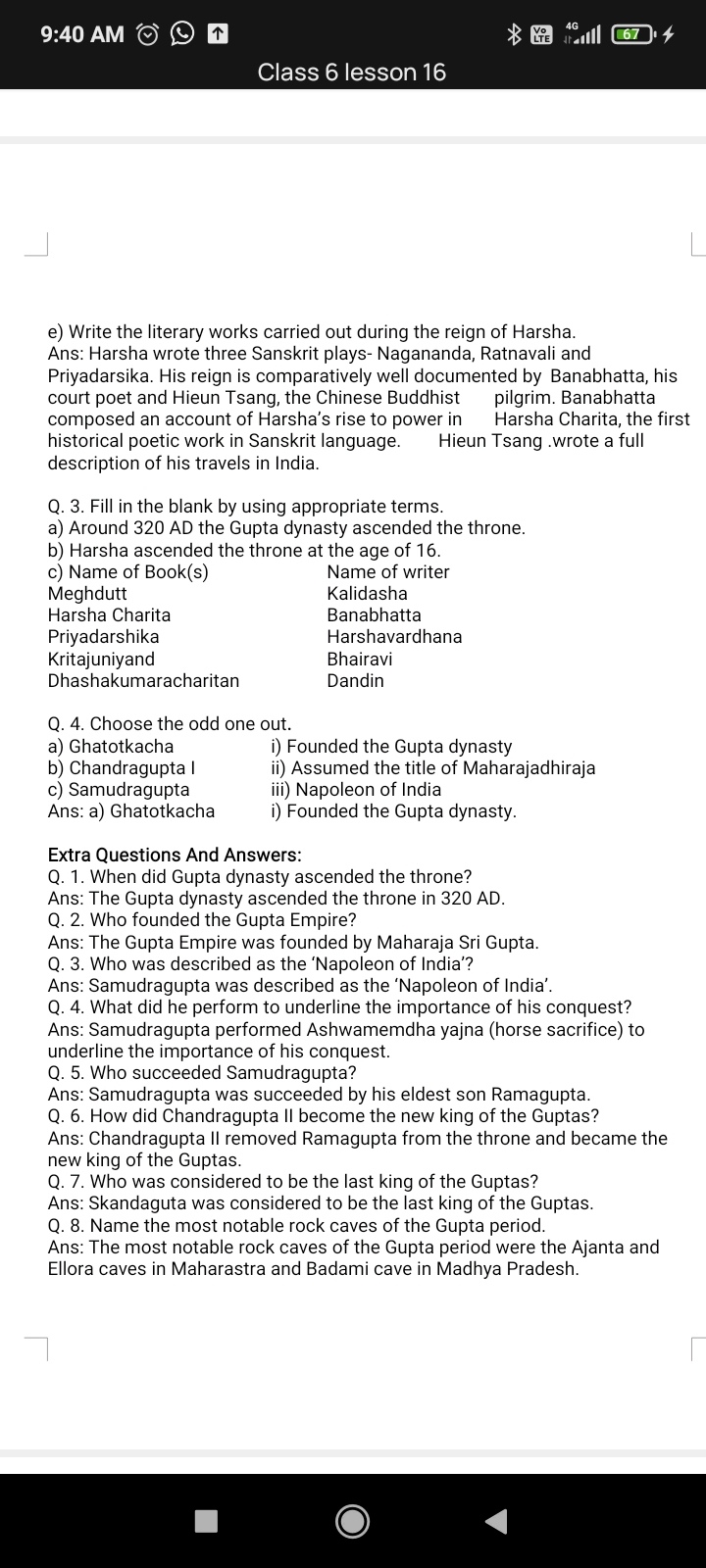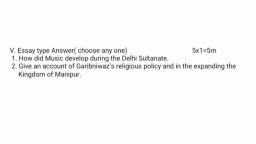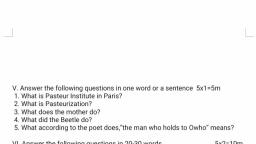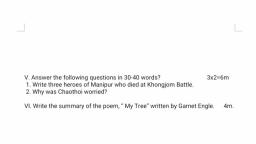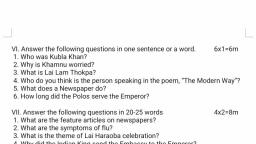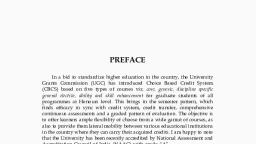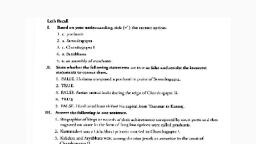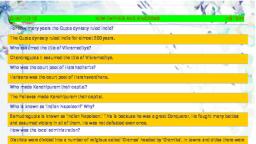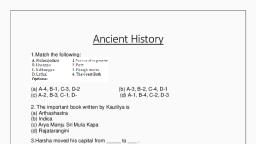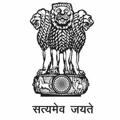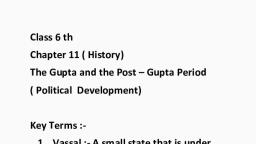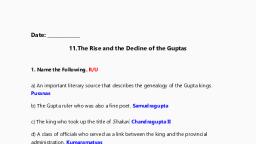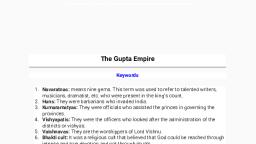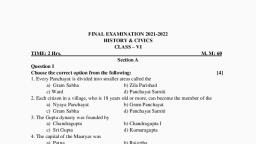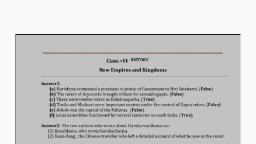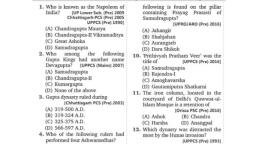Page 1 :
9:40AM © ©, , Class 6 lesson 16, , , , e) Write the literary works carried out during the reign of Harsha., , Ans: Harsha wrote three Sanskrit plays- Nagananda, Ratnavali and, Priyadarsika. His reign is comparatively well documented by Banabhatta, his, court poet and Hieun Tsang, the Chinese Buddhist pilgrim. Banabhatta, composed an account of Harsha’s rise to power in —_ Harsha Charita, the first, historical poetic work in Sanskrit language. Hieun Tsang .wrote a full, description of his travels in India, , Q. 3. Fill in the blank by using appropriate terms., a) Around 320 AD the Gupta dynasty ascended the throne., b) Harsha ascended the throne at the age of 16, , c) Name of Book(s) Name of writer, Meghdutt Kalidasha, Harsha Charita Banabhatta, Priyadarshika Harshavardhana, Kritajuniyand Bhairavi, Dhashakumaracharitan Dandin, , Q. 4. Choose the odd one out., , a) Ghatotkacha i) Founded the Gupta dynasty, , b) Chandragupta | ii) Assumed the title of Maharajadhiraja, c) Samudragupta iii) Napoleon of India, , Ans: a) Ghatotkacha i) Founded the Gupta dynasty., , Extra Questions And Answers:, , Q. 1. When did Gupta dynasty ascended the throne?, , Ans: The Gupta dynasty ascended the throne in 320 AD., , Q. 2. Who founded the Gupta Empire?, , Ans: The Gupta Empire was founded by Maharaja Sri Gupta., , Q. 3. Who was described as the ‘Napoleon of India’?, , Ans: Samudragupta was described as the ‘Napoleon of India’, , Q. 4. What did he perform to underline the importance of his conquest?, Ans: Samudragupta performed Ashwamemdha yajna (horse sacrifice) to, underline the importance of his conquest., , Q. 5. Who succeeded Samudragupta?, , Ans: Samudragupta was succeeded by his eldest son Ramagupta, , Q. 6. How did Chandragupta II become the new king of the Guptas?, , Ans: Chandragupta II removed Ramagupta from the throne and became the, new king of the Guptas., , Q. 7. Who was considered to be the last king of the Guptas?, , Ans: Skandaguta was considered to be the last king of the Guptas., , Q. 8. Name the most notable rock caves of the Gupta period., , Ans: The most notable rock caves of the Gupta period were the Ajanta and, Ellora caves in Maharastra and Badami cave in Madhya Pradesh
